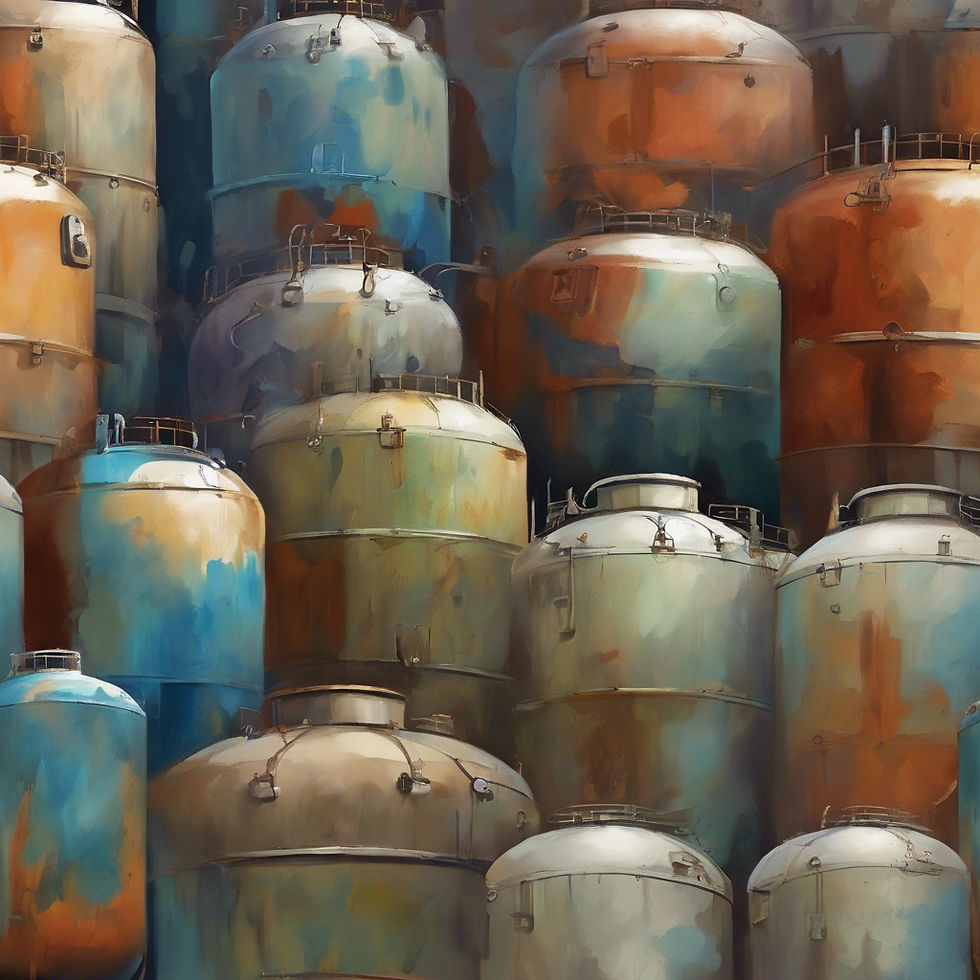Key Design Considerations for Optimizing Your Triethylene Glycol Regenerator: A Comprehensive Analysis
- morgancostigan
- Sep 4, 2024
- 2 min read
Designing a triethylene glycol regenerator demands a meticulous approach to ensure efficiency and reliability in your operations. By delving into key considerations, you can enhance the performance of your regenerator, leading to streamlined processes and improved productivity.
1. Efficient Heat Transfer
Maintaining optimal heat transfer is crucial for the performance of your regenerator. Do you want a flux rate of 8000 or 10,000? Consideration of this question matters and the answer significantly changes the size of your regen.
Incorporating high-quality heat exchangers will reduce the size, cost and efficiency of your unit. A properly designed glycol-to-glycol heat exchanger can reduce the size of your regenarator significantly. Plenty of companies specialize in just that, so get a quote from some of the companies listed in the comments.
Ensuring proper insulation can minimize heat loss, enhancing the overall energy efficiency of the system. These are simple steps that really affect your unit.
2. Material Selection
Selecting the right materials is essential to prevent corrosion and ensure longevity. Most regenators are constructed from carbon steel - A516 Grade 70.
Stainless steel is commonly preferred for sour conditions due to its durability and ability to withstand the harsh conditions within the regenerator.
3. Process Control
Do you need a higer purity in your glycol that 99.3% glycol/water? Adding a sparger box with stripping gas can increase this purity to 99.7%. The difference in this purity CAN result in a shorter absorber tower, so it's a nice option to utilize when you have over 2.5 theoretical stages of adsorption.
Implementing robust process control mechanisms is imperative for maintaining the desired operating conditions within the regenerator. Utilizing advanced automation technologies and monitoring systems can help in achieving precise control over the regeneration process.
4. Optimized Design
The design of the regenerator plays a significant role in its performance. The layout of the regenerator matters to ensure fluid flow, efficient heating with your U-shaped fire tube.

5. Safety Measures
Prioritizing safety considerations is non-negotiable when designing a triethylene glycol regenerator. Implementing adequate safety features, pressure relief systems, and emergency shutdown procedures is essential to prevent accidents and ensure a secure working environment.
6. Capacity and Scalability
Considering the required capacity of the regenerator and its scalability for future expansions is vital. Designing the system with flexibility in mind can accommodate variations in operating conditions and allow for seamless adjustments as your needs evolve.
Whether you are fine-tuning an existing system or embarking on a new project, remembering to incorporate these design considerations will set you on the path to achieving operational excellence and reliability in your processes.



Comments